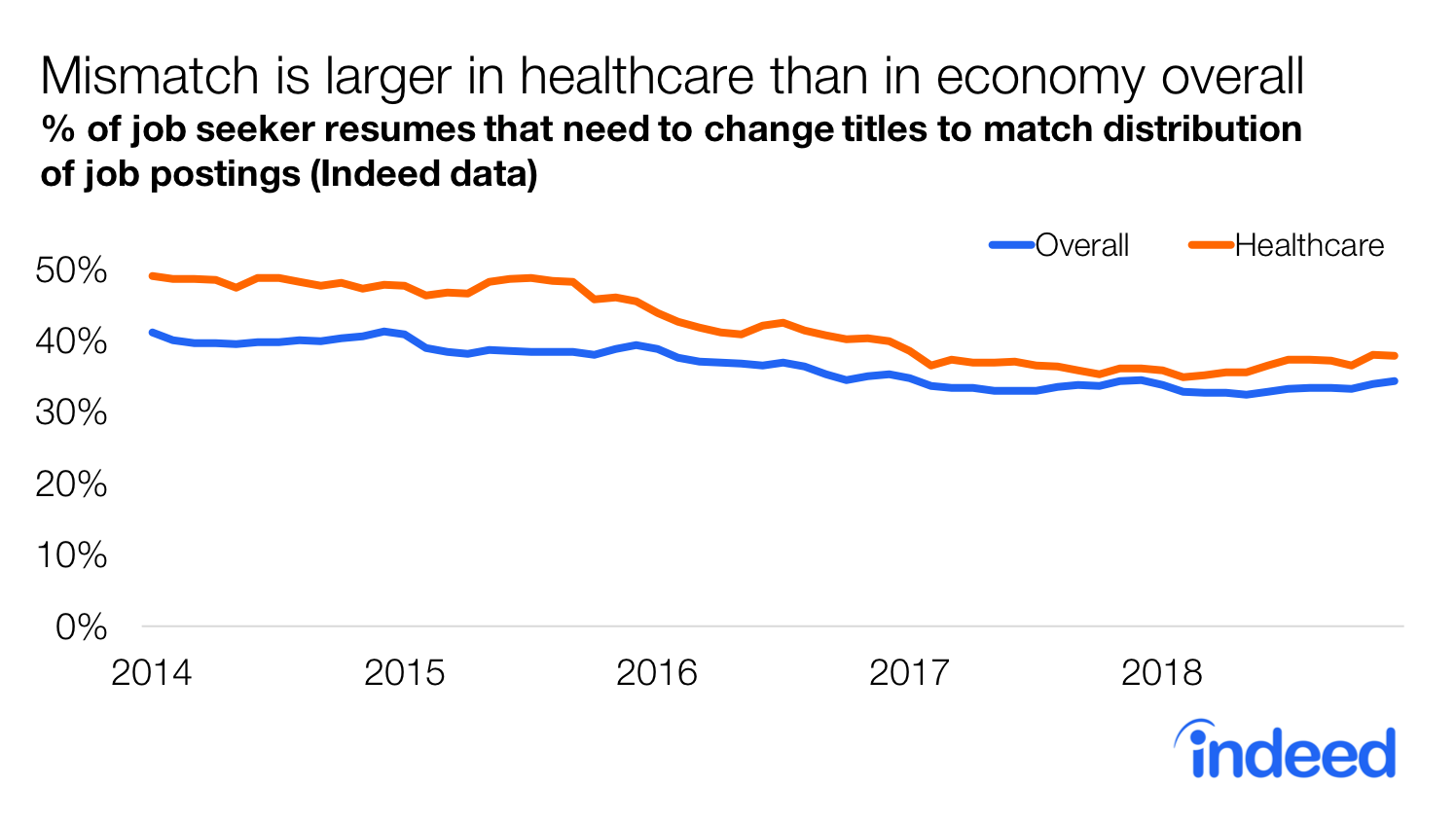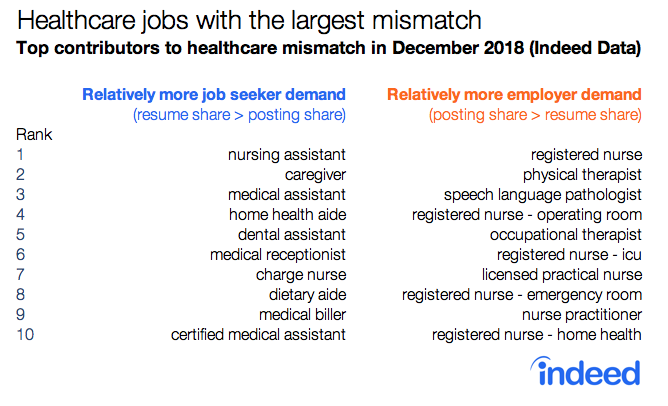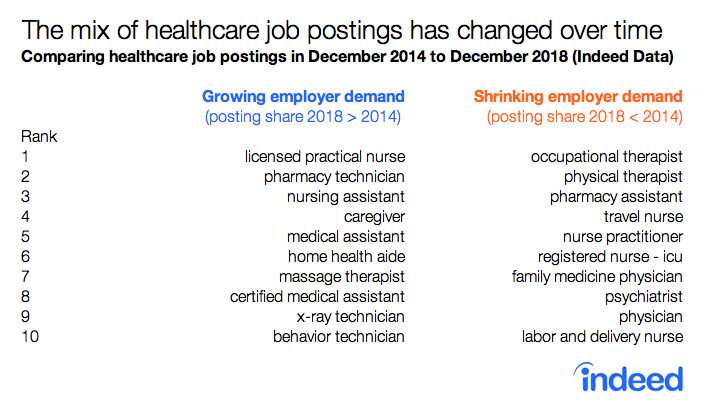There is a lot of talk these days about a skills gap, but in fact, there is no evidence that a disconnect between employers and job seekers is growing in the economy overall. Unfortunately for healthcare though, such a gap appears to exist in that sector. Indeed data show that healthcare job seekers are less well-matched with opportunities in the field than job seekers are with openings in the US labor market as a whole.
Healthcare is now the largest US employer. And, as the US population ages and demand for healthcare services rises, the US Bureau of Labor Statistics (BLS) projects the sector will add more jobs between 2016 and 2026 than any other occupational group. At the same time, our analysis suggests a consistently larger skills gap in healthcare—a concern for an area of the economy in which the need for a strong workforce is paramount.
Mismatch in the healthcare sector: what is going on?
The healthcare gap is particularly hard to close because of the specific skills and certifications required to become a healthcare professional. You can’t become a nurse overnight. Years of preparation are required before someone can be hired. This contrasts with tech, for example, which has few licensing requirements and a lower mismatch between employers and job seekers than either healthcare or the overall economy.

Of course, every sector has some segments where it’s easy to find workers and others where employers struggle. For healthcare, roles like nursing assistant, medical assistant, and dental assistant have more job seekers than job postings. But employers have a hard time filling positions that require years of training, such as many kinds of nurses, physical and occupational therapists, and speech-language pathologists.

In addition, healthcare has fewer job seekers relative to job opportunities than the economy as a whole. This combined with a large mismatch between the work experience listed on job seeker resumes and the titles of Indeed job postings suggests that healthcare faces a greater hiring challenge than do other sectors. (See methodology below.)
How are job opportunities in healthcare changing?
As the healthcare sector evolves, licensed practical nurse, pharmacy technician, and nursing assistant and aide roles have become increasingly prominent, while occupational and physical therapist positions represent a shrinking share of healthcare job postings.

A high level of mismatch in healthcare does not appear to reflect a faster rate of change in job types. In 2018, the distribution of healthcare job postings was nearly 25% different than the distribution in 2014, a shift virtually identical to that in the broad economy.
The significance of the healthcare skills gap
As noted above, healthcare employers must scramble more than their counterparts in other sectors to find workers, in part because of strict licensing requirements. Healthcare occupations have the highest percentage of licensed workers, according to 2015 BLS data. For example, registered nurses must be licensed and get specialized training for subfields. Licensed practical nurses are required to complete an approved educational program and pass a national exam. And, to practice, speech-language pathologists typically need at least a master’s degree and, in most states, a license.
Of course, no one is advocating that regulations designed to protect patients be lifted in order to make it easier to find healthcare workers. These requirements underscore the importance of these jobs, and how vital it is to have skilled, knowledgeable professionals practicing in the field. Nonetheless, healthcare mismatch may have a greater impact on the economy as the sector grows. Employers need to find ways to close the gap, such as by investing more in training. Healthcare is not merely a large and growing part of our economy. It plays a unique role in society, one that will only become more critical as the population ages. Despite the challenges facing the healthcare labor market, it is essential that we do a better job of getting the right people in the right healthcare roles.
Methodology
To quantify mismatch, we looked at resumes to compare job titles of job seekers from their current or most recent employment with the titles of Indeed job postings. Our analysis focuses on aggregated and anonymized data on US job openings and resumes posted on Indeed between January 2014 and December 2018. The data is organized as monthly counts of job postings and resumes mapped to one of 6060 normalized titles. Employers use tens of thousands of job title variations to describe roles, so we normalize them by grouping together titles with slight variations. For example, the normalized title “licensed practical nurse” groups variations of that title plus the acronym LPN. We did not include resumes or job postings if the job title did not map to a normalized title. The healthcare sector is defined as a subset based on 562 normalized titles that can clearly be classified as healthcare. Both mismatch and jobs mix change are measured using a standard dissimilarity index. For further details, see our previous posts on tech mismatch from February of 2018, on overall mismatch from September of 2018, and the associated methodology materials.






